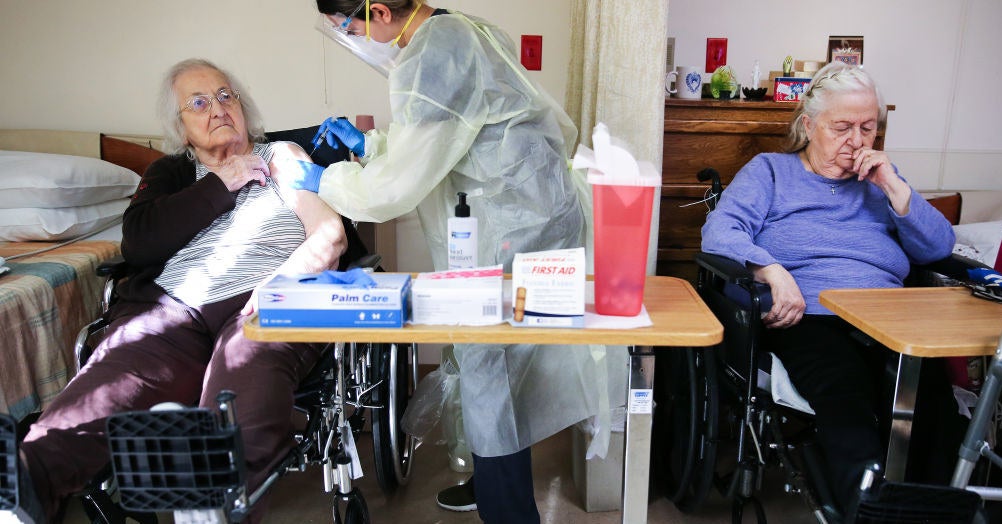Operation Warp Speed officials changed the course of their vaccine release plans on Tuesday, broadening recommendations for those who should take the injections of COVID-19 and promising to send more first doses, not reserving second ones.
The Trump administration’s $ 18 billion public-private partnership development initiative comes amid a disappointingly slow first month of vaccine distribution across the country. The move will aim to maximize the number of people receiving the first of their two shots, offering some protection against a pandemic that is emerging at unprecedented levels across the country.
Vaccines will now be recommended for everyone over 65 or anyone with a high-risk condition, such as diabetes, heart disease or obesity, an estimated total population of about 90 million people.
The federal government will also begin to assist states in creating mass vaccination sites, Health and Human Services Department head Alex Azar said on Tuesday.
“We need doses that go where they will be used most quickly,” said Azar. Vaccine allocations after two weeks will be based on the size of the population over 65 in each state and will require them to report that they used the vaccines they received, he added. “Moving to the broader population when vaccine supplies meet demand has always been part of the plan.”
In the past week alone, more than 1.7 million Americans have been diagnosed with COVID-19 and 22,582 have died, according to the CDC. The OWS changes come before a briefing on Thursday by President-elect Joe Biden, whose transition team last week announced similar plans to push all available vaccine doses, part of a campaign promise to give 100 million vaccines in the first 100 days of the Biden administration.
After initially aiming to have 300 million doses of vaccine distributed by January, the OWS has steadily reduced its projections to 20 million by December, a goal that also failed, with less than 9 million people having received their first injection on Monday. market.
The FDA has authorized two vaccines, one from Pfizer and the other from Moderna, for emergency use. Large-scale clinical trials have found that vaccines were highly protective against COVID-19 when given in two doses three or four weeks apart. But during the holidays, facing a national increase driven largely by a new extra-contagious variant of the coronavirus, the UK decided to expand the window for second doses of its authorized vaccines for up to 12 weeks. Last week, a panel of experts from the World Health Organization suggested that a six-week window was acceptable.
Since then, a tense public debate has taken place about the risks of continuing to apply just one chance to maximize the number of people who could be vaccinated in the United States. Some fear that this could lead to infection of partially immunized people and allow the virus to develop resistance to vaccines. On Tuesday, Azar emphasized his belief that manufacturers would be able to produce enough doses to meet the schedule, and that giving people a second dose would still be a priority.
Lost in the debate is that while some states like new york have struggled with a lack of vaccine supplies, many others struggle with a lack of vaccinators to administer vaccines. From more than 25 million shots fired by OWS to thousands of locations in 64 jurisdictions across the country, only about a third of those shots have been injected into people.
In Los Angeles, where hospitals are being crushed by a record influx of critically ill patients with COVID-19, Dodger Stadium, the country’s largest testing site, is being converted into a vaccine distribution center. California currently ranks 46th across the country in the number of doses administered per 100 people.
“I think this is the final demonstration of the problems with the American health care system, which is fragmented, which probably has the wrong priorities,” said University of Michigan epidemiologist Arnold Monto, acting chairman of the FDA vaccine advisory committee, speaking at a briefing held by the medical magazine JAMA on Monday. “We totally underestimate the challenges that this would pose, because we are really not as organized as countries that have health as a more systematic component of government.”
On Tuesday, Azar said such delays would be counted in states that would receive additional doses. “If you are not using the vaccines you have, then we must rebalance for states that are,” said Azar. “Our states are not using 100% of their allocated vaccine.”
Part of the announcement included an expansion of federal partnerships with pharmacies to deliver injections, Azar said. Hospitals are not where most people look for vaccines, and the distribution of vaccines in community pharmacies will help reach more people in low-income communities and minorities most affected by the pandemic, he suggested.
